I had missed last year`s 2020 Wildebeest migration in Masai Mara Kenya and I will not miss this year`s 2021 Wildebeest migration at all cost.
I mean it is the world`s 7th wonder, not even COVID 19 can stop me. Tourists flock in the Maasai Mara National Reserve to witness this engrossing and riveting wildebeest migration in Masai Mara.
This is a movie like scene, an incredibly staged spectacle directed by Mother nature and starring wildebeests, zebras, eland, Thompson, and grants gazelle.
The villain is the fierce and scary 15 Inches Long Nile Crocodiles. This is more of watching a movie during uncut production.
Here are the 5 Major Riveting things you should know about The Wildebeest Migration in Masai Mara and Serengeti.
5.) How the great Wildebeest Migration Works.
The Great wildebeest migration is the ever-moving ecosystem of millions of animals in the Masai Mara, Serengeti ecosystem.
Around 1.6 million wildebeest, 300,000 Zebras, 400,000 Thomson Gazelles, thousands of Eland and other ungulates (hoofed animals) participate in this spectacle better known as the greatest show on planet earth.
The main keyword on how the wildebeest migration works is all about the rain. The wildebeest follow the rainfall pattern.
This makes it hard to predict when they will start moving even the wildebeest themselves have no clue of which specific day. This is due to rainfall shifting seasons due to climate change.
4.) Why do wildebeest migrate each year?
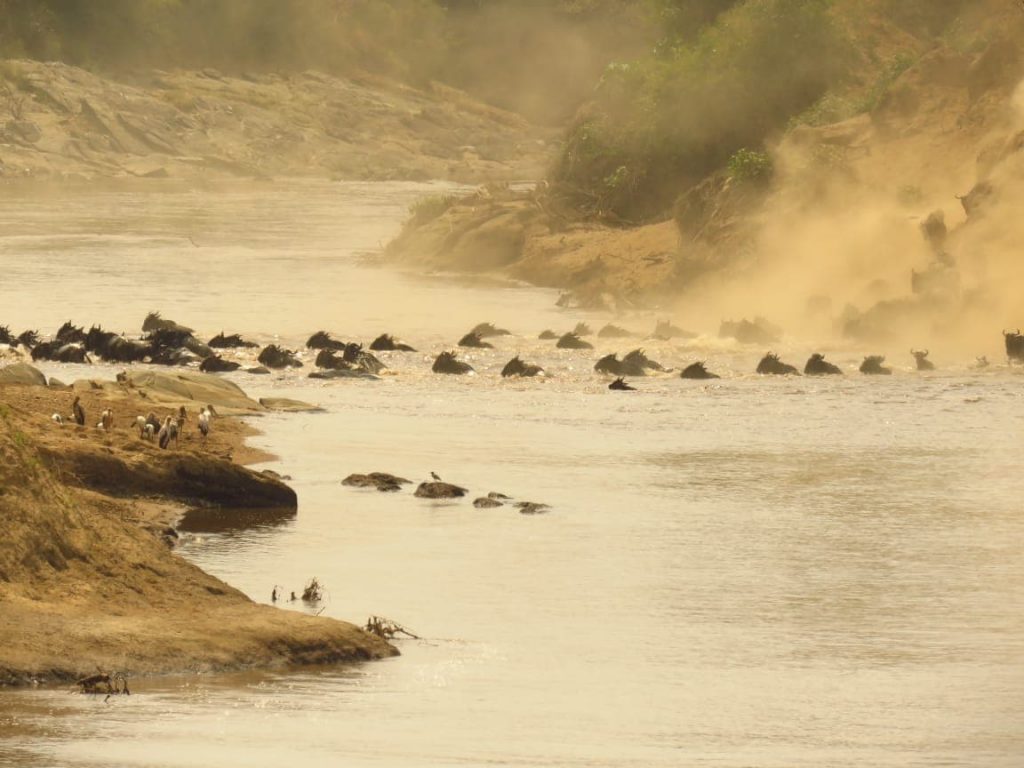
The main purpose of migrating is to search for food, where there is rainfall there are green pastures.
So, they follow the pattern of rainfall. Moving from Serengeti all the way to Masai Mara each year.
Even though the wildebeest migration was thought to be predictable they move in a zigzag and only when it rains.
Since rainfall is also unpredictable lately it has been a challenge for any formal wildebeest migration prediction.
In January the herds start making their way to Southern Serengeti, I suppose they smell the air change and predict the rain.
This is the period they give birth between January and February and March. They can give up to 9000 calves in a day.
This is the day the predators can’t help but look forward to the easy prey.
3.) What is the best time to see the great wildebeest migration?
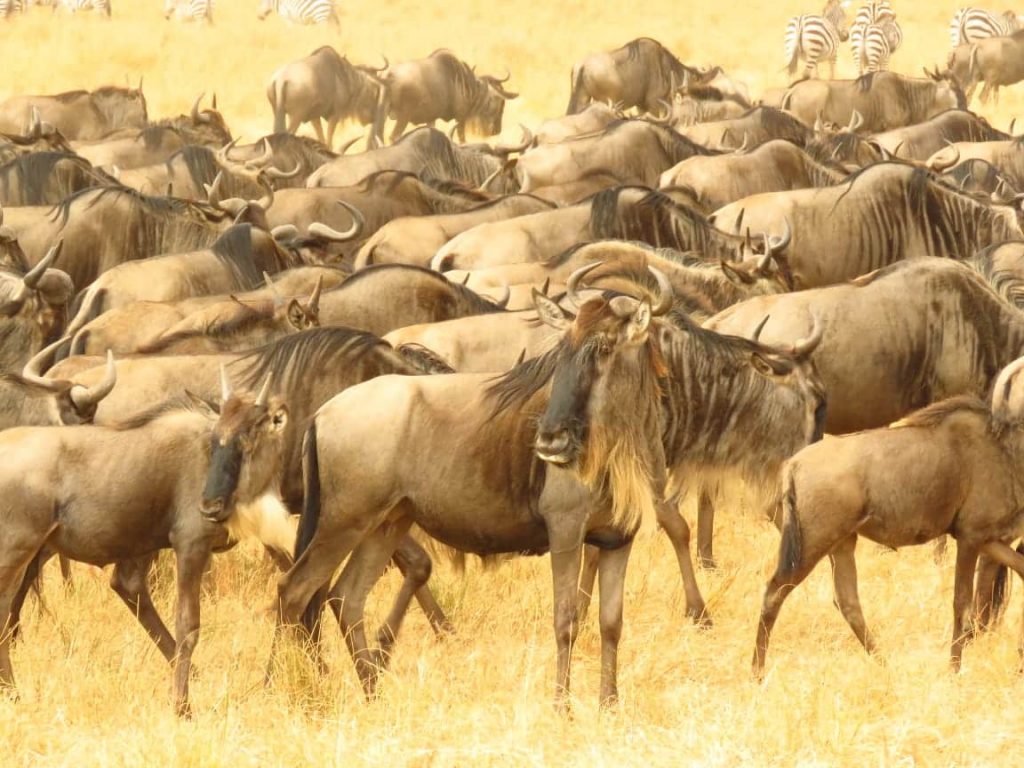
This question is wide but we will unearth every month of the Year and then from there you will able to judge which month suits you.
Is it Kenya`s Masai Mara or Tanzania`s Serengeti? Let us delve in and find out.
January (The wildebeest migration in Serengeti)
The wildebeest are feasting on the green grass due to the October and December rains in the Southern Serengeti near lake Ndutu and lake Kusini.
February.
Time to give birth at the Southern Serengeti. Around 600,000 Calves are born with an average number of 8500 Calves a day between late January and March.
March (The wildebeest migration in Serengeti)
By now the last batch of calves is being born and the wildebeest are moving across southern Serengeti, sometimes up to the north munching the green juicy delicacy.
At the same time, the predators are following closely.
April.
The wildebeest have cleared the Northern Serengeti clean and now they are moving Northwards up to the western corridor.
By now the predators are still following the wildebeest and dismantling them at the slightest opportunity.
May (The wildebeest migration in Serengeti )
If I may say the drama starts this month since they are now in the western corridor. They gather and plan an exit plan to the other side of Grumeti and Mbalageti Rivers which are infested with Crocodiles.
June.
The Challenge to cross the Grumeti and Mbalageti Rivers starts though not as much drama as the River Mara.
The crocodiles are however ready for the wildebeest fest to feast. Party Time for crocs!
July (The Wildebeest Migration in Mara)
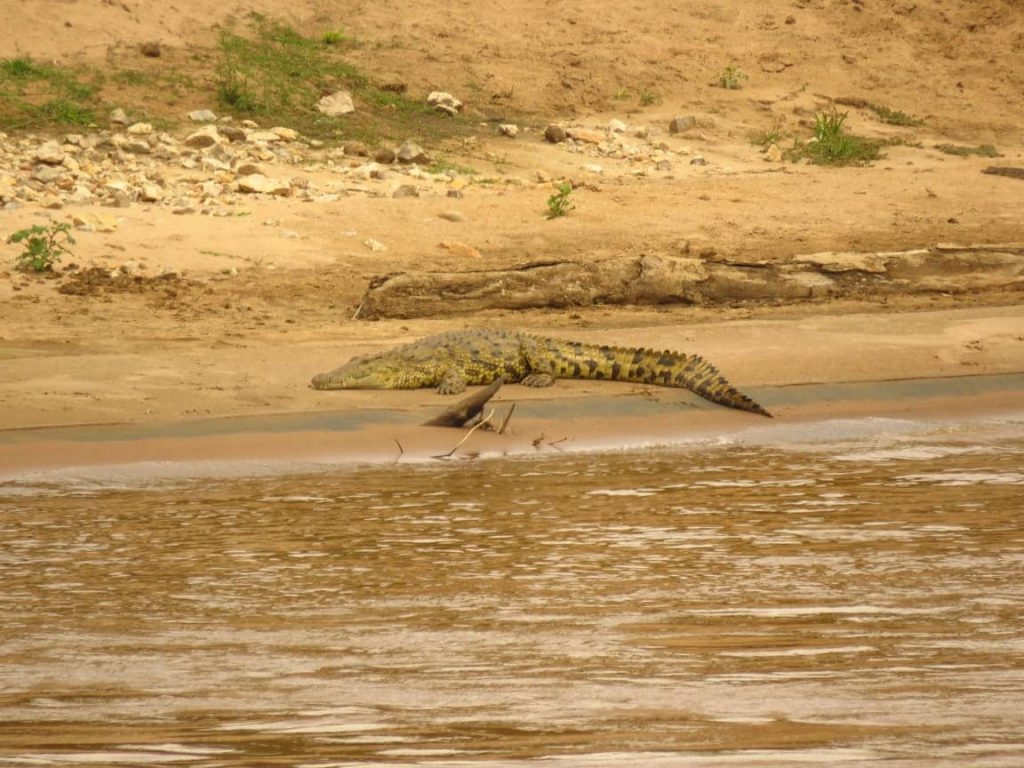
Let’s start beating the drums the real action starts in the Mara river. The ones who survived the Grumeti river are now ready to cross the treacherous brown water of Mara River.
The Fierce Nile long Crocodiles are ready to feast on a year-round Party that is just about to start.
However, it is not guaranteed the wildebeest will cross in July since it depends on the rains, it may start as early as June or even as late as August but it has been consistently been happening in July.
August (The Wildebeest Migration in Masai Mara)
The crossing starts getting interesting with the wildebeest ready to duck the fierce long Nile Crocodile jaws.
If they are lucky enough to escape, they still have a long way to face the Masai Mara Lions, Cheetahs, Leopards, hyenas and vultures preying on the already dead assisted by hyenas.
September (The Wildebeest Migration in Masai Mara)
Some of the herds seem to say, sorry we won’t make it we are happy here. Mara River is not our cup of tea.
However, the Majority cross the Masai River and are now enjoying and feasting on the green pastures after all it was all worth it.
October.
So, the Majority of the wildebeest migration will start moving south f Serengeti heeding the call of the rain, while some will have to face the Mara River.
At this month, the wildebeest are getting fewer by the day.
November
The wildebeest must hasten as the rains start to fall and make it to the south before the First sprout of the green grass.
If you need to see them in masses head to the East of Serengeti and the Seronero Region.
December. (The wildebeest migration in Serengeti)
Hoorah, back home and they are welcomed by the green grass carpet, it is feasting time as well as the predators being on the radar of the wildebeest.
This is the round ecosystem and with no time the wildebeest migration starts all over again. This is nature at its best.
I hope the question, when is the best time to see the wildebeest migration is well Answered.
2.) Engrossing Facts About the wildebeest Migration.
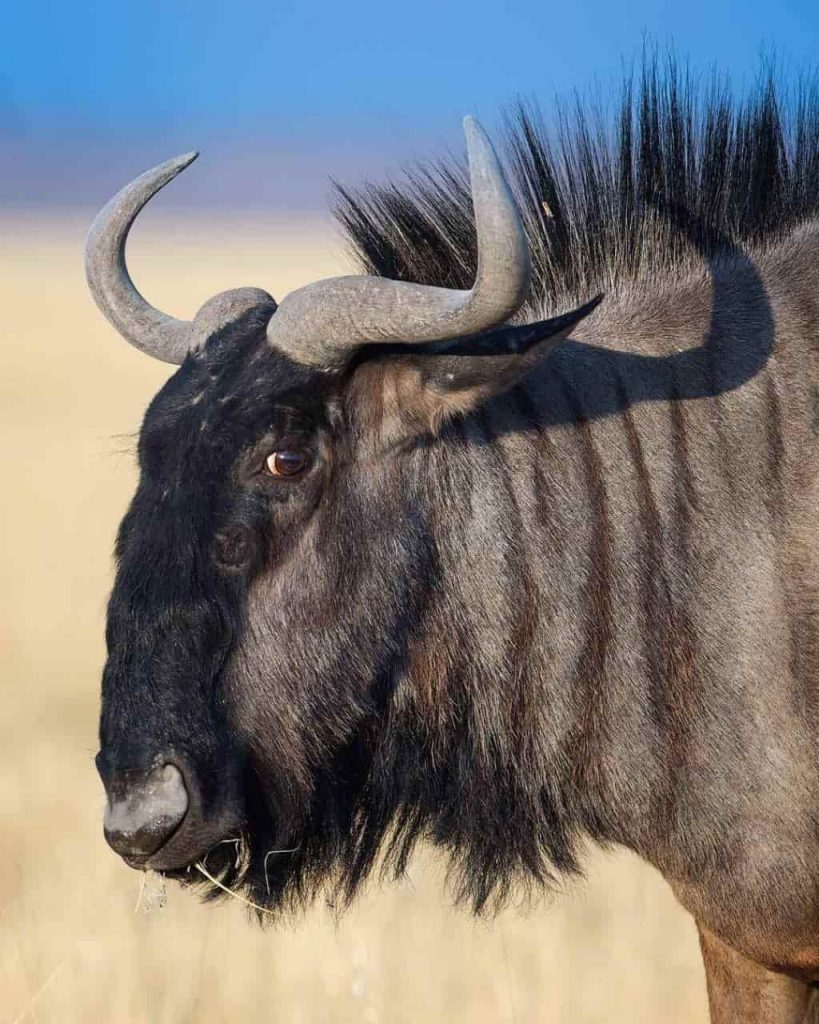
- The Pattern is not always constant: How the wildebeest moves will be determined by the rain pattern and due to global warming, it is not easily predictable.
- The herds are not always running sometimes they just chose to lazy around but once they start running you will be left in awe.
- Wildebeest do not always run in one herd, they split and you will have different herds crossing the same river at different points.
- Swarm intelligence: The wildebeest move or run in the same direction and never bump into each other due to a phenomenon known as swarm intelligence. As stated above, they divide into small herds known as mega herds to ensure equal distribution of resources but at the end of the day they will end up in the same direction.
- The wildebeest migration is the longest circle on earth covering a staggering 1000kms plus during each circle of every year.
1.) The Wildebeest Migration Predators.
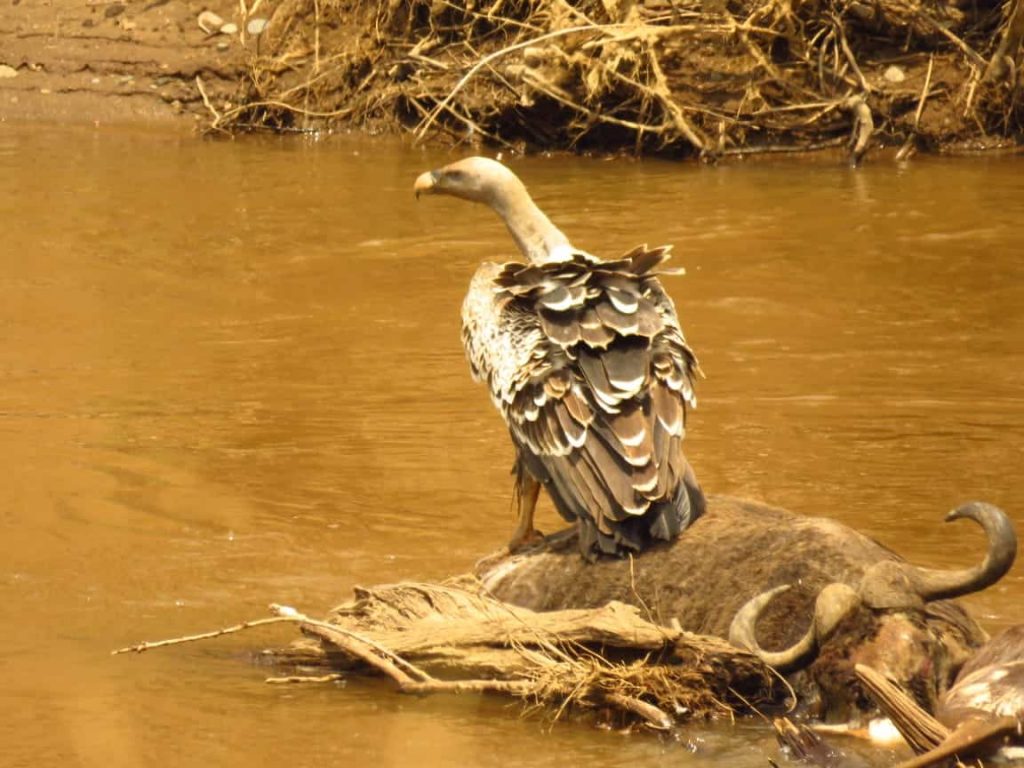
The long fierce Nile Crocodiles are the main Villain in river Mara; however, the wildebeest are not always crossing Rivers.
While feasting and fattening after migration. The Lions, Cheetahs, Leopards, Hyenas and Vultures are salivating on them. Food chain at its best pattern.
However, the wildebeest has a mechanism whereby they do not stay in the same place for long and this is a defensive characteristic since most of the predators have territory, they cannot leave nor invade other territories following the wildebeest.
However, the main villain, the Nile crocodile, can grow up to 15 feet long and weigh up to 700kilograms. These fierce crocs mostly attack stray wildebeest, zebra or gazelles. Since they are usually overwhelmed when they move in a straight continuous string.
Conclusion.
The great wildebeest migration is quite unpredictable, however, my personal view is to travel to Masai Mara National Reserve between July and mid-October.
This is the peak of crossing the Mara River where the Action takes place. While in Serengeti Tanzania they are in plenty in December and March or between May and November.
Please remember the wildebeest migration is driven by the rain patterns. So this is not quite accurate but according to my experience. These months are ideal.
Also, don’t dwell too much on the wildebeest migration and forget the big 5, wildlife Safari, birdwatching, adventure and vacationing on the beaches.
Make a booking this year for the 2021 wildebeest Migration and get crazy discounts courtesy of Incredible Kenya Adventures.
Read-:









